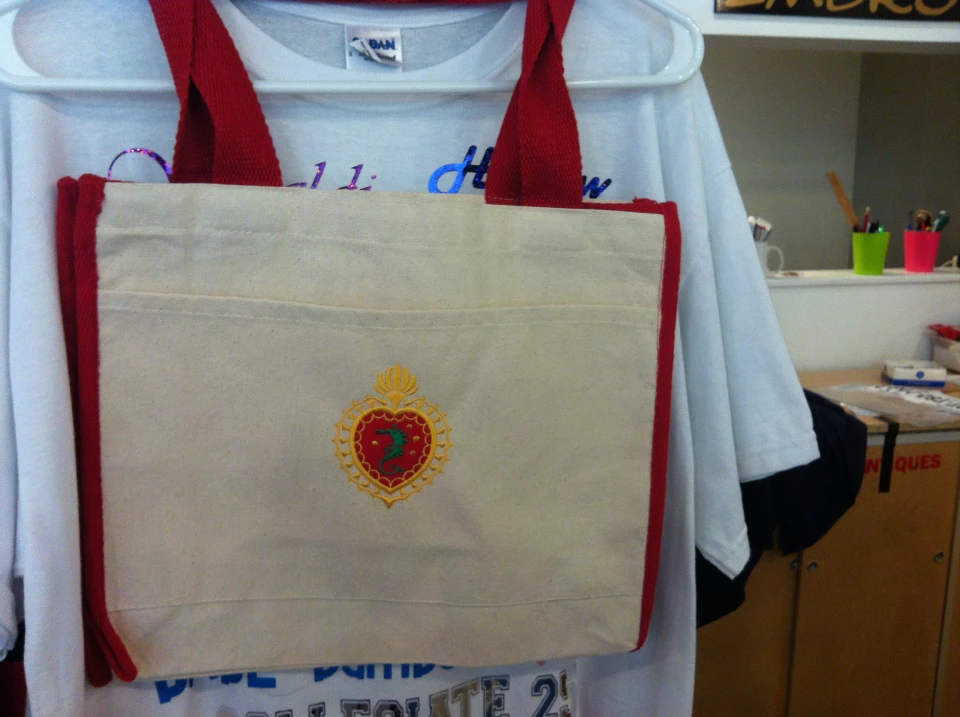Personalized Embroidery for All Your Demands - From School Uniforms to Sports Teams
Personalized Embroidery for All Your Demands - From School Uniforms to Sports Teams
Blog Article
The Art of Personalized Needlework: Opening the Secrets to Creating Special and Remarkable Layouts
Embroidery, a craft soaked in practice and virtuosity, holds within its complex stitches the power to change material right into a canvas of one-of-a-kind expression. The secrets to creating customized needlework styles that astound the eye and leave a long-term impact depend on a delicate equilibrium of strategy, creative thinking, and interest to detail. As we dig right into the world of customized embroidery, we discover the nuanced interplay between string selection, sew intricacy, and style personalization that raises a mere garment to an artwork. Join us on a trip with the art of custom embroidery as we unravel the enigmas behind crafting absolutely memorable and unique creations.
Picking the Right Needlework Threads
When choosing embroidery threads, what key aspects should you take into consideration to ensure the best outcomes for your custom layouts? The selection of needlework string is important in figuring out the last end result of your embroidered layout.
Thicker strings can include measurement and appearance to your design, while finer strings are excellent for detailed information and tiny text. In addition, considering the shade fastness and washability of the string is vital to make sure that your custom designs keep their quality and vibrancy over time.
Discovering Different Stitch Methods
To delve into the world of 'Exploring Different Stitch Techniques', one should realize the complexities and subtleties that each stitching technique offers the art of needlework. Different stitch methods not just add aesthetic rate of interest however also add to the total appearance and dimension of the design. One preferred stitch strategy is the satin stitch, which involves very closely packed parallel stitches to produce a smooth and shiny surface area, perfect for filling up in forms and producing vibrant lays out.
On the other hand, the backstitch is a flexible technique often utilized for laying out and including fine details. It involves stitching backward to produce a solid line of needlework. Furthermore, the French knot stitch includes a tactile aspect to designs, perfect for producing distinctive accents like blossom facilities or ornamental touches.
Checking out different stitch techniques permits embroiderers to have fun with light, shadow, and depth within their layouts, elevating the aesthetic appeal and creative high quality of their needlework tasks. By grasping various stitching approaches, one can open endless opportunities for producing one-of-a-kind and memorable custom-made needlework items.
Incorporating Personalized Layout Aspects
Having actually explored the complexities of various stitch strategies such as the satin stitch, backstitch, and French knot, the emphasis now changes in the direction of integrating tailored style elements in custom embroidery tasks. Personalized style components play an essential role in making needlework jobs genuinely special and memorable.
One more way to integrate tailored style elements is by including symbols or motifs that hold special significance to the recipient or mirror their rate of interests and individuality. As an example, integrating a favored flower, pet, or hobby-related sign can make the needlework design a lot more purposeful and customized. Additionally, picking colors that resonate with the recipient or straighten with the intended theme can even more improve the personalization of the needlework task.
Understanding the Art of Shade Coordination
One trick facet of shade sychronisation is comprehending shade theory. This includes recognizing how different shades communicate with each other, the emotions they communicate, and how they can be incorporated to produce aesthetically attractive designs. By applying shade concept concepts, embroiderers can develop harmonious color palettes that boost the overall look of the style.
Furthermore, taking notice of comparison is essential in shade sychronisation. Utilizing contrasting colors can aid specific components of the design pop, improve clarity, and develop an aesthetically vibrant embroidery piece. By mastering the art of shade coordination, embroiderers can elevate their designs and create unforgettable pieces that resonate with clients and visitors alike.
Enhancing Structure With Advanced Embroidery Stitches

Bullion knots, on the other hand, can be used to produce twisted, ropelike elements that add a luxurious feel to the embroidery. Experimenting with these advanced embroidery stitches enables you to push the borders of conventional needlework and create absolutely special and aesthetically enticing textures in your styles.
Conclusion
To conclude, the art of custom-made embroidery includes a mix of picking directory the appropriate threads, exploring various stitch strategies, integrating personalized design components, mastering shade control, and boosting texture with innovative stitches. By comprehending and executing these crucial elements, embroiderers can produce distinct and remarkable designs that showcase their creativity and ability. Embroidery enthusiasts can open the secrets to developing lovely and bespoke items that stand apart and leave a long lasting impression.
Report this page